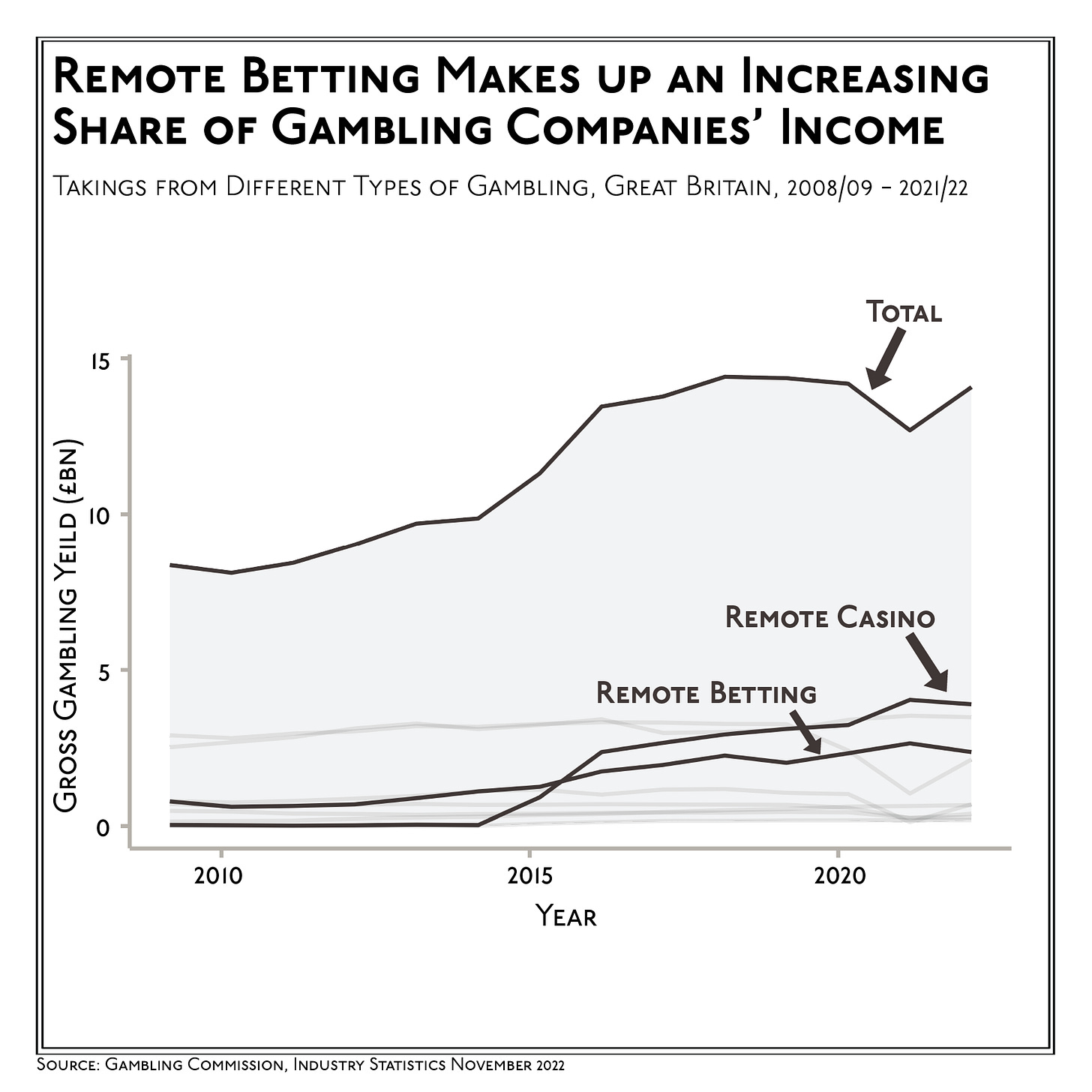Gambling Now Employs More People than Pottery in Stoke-on-Trent
Latest Census figures show how gambling has overtaken pottery in the Potteries

The collection of six towns that make up Stoke-on-Trent is famous for making pottery. Clay was the material that moulded Tunstall, Burslem, Hanley, Stoke, Fenton and Longton together from neighbouring Staffordshire villages into one of Britain’s major industrial centres.
Pottery manufacturing in the area dates back to at least before 1600. It was in the eighteenth century that it began to take off in what historians would later call the beginning of the Industrial Revolution.
In 1829 Simeon Shaw published History of the Staffordshire potteries. At this time, he writes, there were 26 factories in Hanley and Shelton and eight more in operation in Stoke-on-Trent proper. There were no doubt more in other parts of the region at that time.
One of these was the factory of Josiah Spode, a prominent potter of the time and to whom Shaw dedicated his book. He describes his factory as the largest of its kind in Europe and ‘possessing the advantages of canal carriage to its very interior’.
So connected was this part of Staffordshire to clay in the public mind that it was given the name of the Potteries.
The name stuck but the jobs and production began to dwindle; a decline that accelerated after the Second World War.
There is a new industry in Staffordshire now, which in fact is probably as old as making pots, if not older: gambling. The latest Census data1 shows that the gambling sector now employs more people in Stoke-on-Trent than ceramics.
In 2011 there were 3,428 people in the city who made a living from what is technically called ‘Manufacture of other non-metallic mineral products’. This is a catch-all term that includes making pottery, glass and cement. In the same year 1,294 people worked in the gambling sector.
In 2021 the tables had turned: 2,294 people were working in the gambling industry that year in Stoke while the number employed in the ceramics manufacturing sector fell to 1,538.
Stoke-on-Trent as a gambling centre in Britain
This chart plots the number of licensed gambling premises from the Gambling Commission against the Census data showing the percentage of people employed in the sector, by local authority area
.
It shows that Stoke has an average number of betting shops and arcades for a city of its size, but it is a huge outlier in terms of the percentage of people employed in the sector. What’s going on?
Bet365
The simple explanation for why so many people in the Potteries work in gambling is that Stoke-on-Trent is the headquarters of Bet365.
Denise Coates founded the company in Stoke in 2000. Since then it has grown to 6,000 employees, many of whom are based at its headquarters in the Etruria neighbourhood of the city
.
The group owns the local football team, Stoke City F.C., and their ground is named the bet365 stadium.
A total of 217 people in Hanley and Etruria are employed in the gambling industry - the darkest area shaded on the map above. This is 7.2 per cent of those in work in the area - the highest proportion of more than 7,000 neighbourhoods across England and Wales2.
It’s not just Hanley and Etruria - the next 20 neighbourhoods with the highest proportions of people in work in the betting industry are all in Stoke-on-Trent and neighbouring Newcastle-under-Lyme.
Chance would be a fine thing?
To some degree the decline in the pottery industry in Staffordshire is one of many strands of the overall thread of the decline of British manufacturing.
In 1997 manufacturing was the largest single industry by employment in the UK.
It’s now the fifth largest sector, with about 2.7m people employed in manufacturing compared to 4.4m back in 1997.
If this is just the natural replacement of one industry for another, much like how candles were replaced by electric lighting, then why is there disquiet about the prevalence of gambling in our society?
One simple answer is that betting can be taken too far. According to the Gambling Commission about 0.3 per cent of the public are problem gamblers, rising to 1.4 per cent of people aged 16 to 24. A separate study by the charity GambleAware (using a slightly different methodology) found the figure to be 2.8 per cent. A gambling addiction can obviously lead to all sorts of problems, not least debt and despair, for both the gambler and their loved ones.
This has always been the case but the British gambling industry has grown significantly in the last decade. In 2011/12 the gambling industry took £9.0bn from punters. This figure rose to £14.1bn in 2021/22.
This increase has been driven by the rise of online betting. In 2011/12 gambling firms made about £710m from three different types of remote betting. These include self-service betting terminals, online sports betting and online casinos. Ten years later this figure rose to £6.4bn.
The combination of gambling and the smartphone has opened a new route both to develop and to disguise a gambling habit. Previously you had to visit a betting shop or a racetrack to place a bet. Now you can lose thousands of pounds betting on sports from your own home. This faceless, frictionless way to gamble makes it easier to avoid detection.
I don’t know whether the upward trend in gambling revenue will continue but the saying ‘the house always wins’ is as true as it ever was. And today, the house has a firm foundation in the clay of the Potteries.
I work on the Census data at the Office for National Statistics
Technically called Middle Layer Super Output Areas







